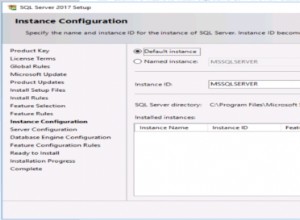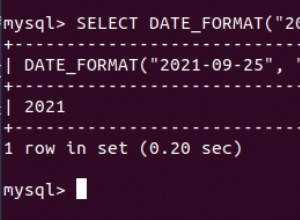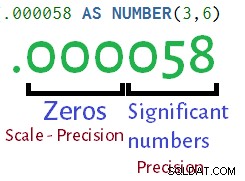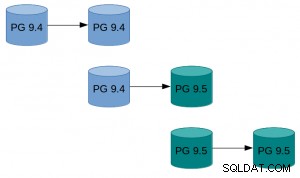Des problèmes comme celui-ci sont plus faciles à résoudre si vous avez un tableau de calendrier avec toutes les dates dont vous avez besoin. Si vous ne disposez pas d'une telle table, vous pouvez la créer avec une requête comme celle-ci :
create table `calendar` (
`date` DATE NOT NULL,
PRIMARY KEY (`date`)
)
select DATE_ADD('1900-01-01',INTERVAL t4.c*10000 + t3.c*1000 + t2.c*100 + t1.c*10 + t0.c DAY) as `date`
from
(select 0 c union all select 1 union all select 2 union all select 3 union all select 4 union all select 5 union all select 6 union all select 7 union all select 8 union all select 9) t0,
(select 0 c union all select 1 union all select 2 union all select 3 union all select 4 union all select 5 union all select 6 union all select 7 union all select 8 union all select 9) t1,
(select 0 c union all select 1 union all select 2 union all select 3 union all select 4 union all select 5 union all select 6 union all select 7 union all select 8 union all select 9) t2,
(select 0 c union all select 1 union all select 2 union all select 3 union all select 4 union all select 5 union all select 6 union all select 7 union all select 8 union all select 9) t3,
(select 0 c union all select 1 union all select 2 union all select 3 union all select 4 union all select 5 union all select 6 union all select 7 union all select 8 union all select 9) t4
Cela créera une table avec des dates allant du 1900-01-01 au 2173-10-15 (100K jours) et ne consommera qu'environ 2,5 Mo. Vous pouvez l'adapter à vos besoins.
En utilisant la table caledar, vous pouvez obtenir des plages de trois mois :
select
DATE_FORMAT(date_sub(c.date, INTERVAL 1 day), '%Y-%m') as month,
date_sub(c.date, INTERVAL 3 month) as first_day,
date_sub(c.date, INTERVAL 1 day) as last_day
from calendar c
where day(c.date) = 1
and c.date between '2015-02-01' and '2015-09-01'
Résultat :
| month | first_day | last_day |
| 2015-01 | 2014-11-01 | 2015-01-31 |
| 2015-02 | 2014-12-01 | 2015-02-28 |
| 2015-03 | 2015-01-01 | 2015-03-31 |
| 2015-04 | 2015-02-01 | 2015-04-30 |
| 2015-05 | 2015-03-01 | 2015-05-31 |
| 2015-06 | 2015-04-01 | 2015-06-30 |
| 2015-07 | 2015-05-01 | 2015-07-31 |
| 2015-08 | 2015-06-01 | 2015-08-31 |
Ajustez-le, si vous voulez vraiment utiliser quelque chose comme des intervalles de 90 jours.
Maintenant, c'est une simple jointure gauche avec la table de connexion pour obtenir ce que vous voulez :
select i.month as `Date`, count(distinct l.user_id) as `Active users`
from (
select
date_format(date_sub(c.date, interval 1 day), '%Y-%m') as month,
date_sub(c.date, interval 3 month) as first_day,
date_sub(c.date, interval 1 day) as last_day
from calendar c
where day(c.date) = 1
and c.date between '2015-02-01' and '2015-09-01'
) i
left join login_table l on l.login_date between i.first_day and i.last_day
group by i.month
http://sqlfiddle.com/#!9/d1bb0/3




